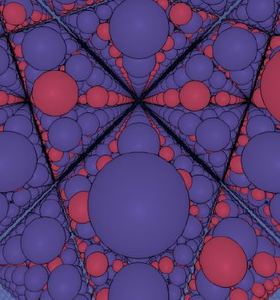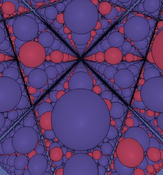Information
- Publication Type: Bachelor Thesis
- Workgroup(s)/Project(s):
- Date: September 2017
- Date (Start): March 2017
- Date (End): September 2017
- Matrikelnummer: 01425673
- First Supervisor: Tobias Klein
Abstract
The semiconductor industry has been experiencing an inexorable upward trend since its emergence almost 60 years ago, with ever since advancing technology. The development of continually smaller chips makes it possible to integrate small everyday objects such as keys or watches into the digital world. An important component of these chips are transistors, which are built up internally of at least one semiconductor.
This thesis deals with these semiconductors and presents a 3D game developed with
Unity3D, which makes it possible to take look inside a transistor and explore it interactively. The player therefore has control of an electron flying through the crystal. However, this flight through the crystal is not free from obstacles. In the middle of the structure there are consistently occurring oxide layers which, if the electrons speed is too low, prevent the passage and repel the electron. Only at a correspondingly high speed is it possible to tunnel trough them. However, the focus is on the fact that the user can adjust
the scene, partly interactively, by means of various parameters and thus can generate
all possible semiconductor structures. This is not only suitable for viewing and learning different structural shapes and their symmetries, but also changes the playing experience and the degree of difficulty.
The implementation is based on cellVIEW, a tool for the visualization of extensive molecular structures, which allows us to perform high-performance rendering of semiconductor structures of often far more than 15 million atoms, which implies, as the results at the end of the work show, really impressively large crystals.
Additional Files and Images
Additional images and videos
Additional files
Weblinks
No further information available.
BibTeX
@bachelorsthesis{Michl_2017_CSV,
title = "Generation and Visualisation of Crystal Structures",
author = "Gerald Michl",
year = "2017",
abstract = "The semiconductor industry has been experiencing an
inexorable upward trend since its emergence almost 60 years
ago, with ever since advancing technology. The development
of continually smaller chips makes it possible to integrate
small everyday objects such as keys or watches into the
digital world. An important component of these chips are
transistors, which are built up internally of at least one
semiconductor. This thesis deals with these semiconductors
and presents a 3D game developed with Unity3D, which makes
it possible to take look inside a transistor and explore it
interactively. The player therefore has control of an
electron flying through the crystal. However, this flight
through the crystal is not free from obstacles. In the
middle of the structure there are consistently occurring
oxide layers which, if the electrons speed is too low,
prevent the passage and repel the electron. Only at a
correspondingly high speed is it possible to tunnel trough
them. However, the focus is on the fact that the user can
adjust the scene, partly interactively, by means of various
parameters and thus can generate all possible semiconductor
structures. This is not only suitable for viewing and
learning different structural shapes and their symmetries,
but also changes the playing experience and the degree of
difficulty. The implementation is based on cellVIEW, a tool
for the visualization of extensive molecular structures,
which allows us to perform high-performance rendering of
semiconductor structures of often far more than 15 million
atoms, which implies, as the results at the end of the work
show, really impressively large crystals.",
month = sep,
address = "Favoritenstrasse 9-11/E193-02, A-1040 Vienna, Austria",
school = "Institute of Computer Graphics and Algorithms, Vienna
University of Technology ",
URL = "https://www.cg.tuwien.ac.at/research/publications/2017/Michl_2017_CSV/",
}

 Bachelor Thesis
Bachelor Thesis image
image
